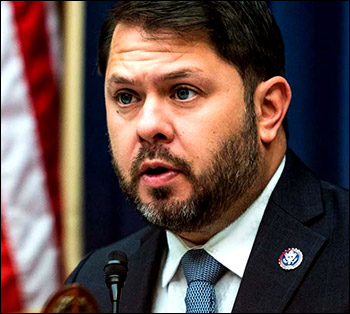By Jim Ellis — Friday, Nov. 1, 2024
Senate

Former news anchor and 2024 Senate GOP nominee Kari Lake. Photo by Gage Skidmore
After a summer of substantially trailing US Rep. Ruben Gallego (D-Phoenix) in the open Arizona Senate race, a trio of polls find former Phoenix news anchor Kari Lake (R) narrowing the gap between the two contenders.
The three surveys, from The Trafalgar Group, Data Orbital, and AtlasIntel, all taken during the Oct. 24-29 period with sampling universes ranging between 550 and 1,458, produce ballot test scores with Lake closing to within four points (Trafalgar) and one point (AtlasIntel), and with her actually leading by a point (Data Orbital) in the final survey.
The AtlasIntel group has conducted a series of Senate polls. In Michigan (Oct. 25-29; 983 likely Michigan voters) the pollsters see Rep. Elissa Slotkin’s (D-Lansing) lead over former US Rep. Mike Rogers (R) dropping to just two percentage points, 49-47 percent.
The New York Times and Siena College tested the surprisingly tight Nebraska race where Independent Dan Osborn is challenging two-term Republican Sen. Deb Fischer. The poll (Oct. 23-26; 1,194 likely Nebraska voters) finds a two-point lead for the incumbent, which is a rebound from other studies that showed her trailing. The ballot test yields Fischer a 48-46 percent margin.
The Trafalgar Group research organization also finds that the Nevada race between Sen. Jacky Rosen (D) and Afghan War veteran Sam Brown (R) is closing to within two points, a major change in a contest where the incumbent appeared to have a secure lead. The Trafalgar data (Oct. 25-28; 1,082 likely Nevada voters) projects Sen. Rosen leading, 47-45 percent.
Trafalgar also returned results for the Ohio Senate race featuring Sen. Sherrod Brown (D) and businessman Bernie Moreno (R). This poll (Oct. 25-28; 1,127 likely Ohio voters) sees the senator leading with a bare edge of 48-47 percent.
AtlasIntel tested the tight Pennsylvania race (Oct. 25-29; 1,299 likely Pennsylvania voters) and they also see a two-point race evolving. The ballot test gives Sen. Bob Casey Jr. (D) a 49-47 percent margin over GOP businessman and retired hedge fund CEO David McCormick.
From Oct. 20-27, eight polls from eight different polling firms were conducted of the Wisconsin Senate race. In one of the surveys, both Sen. Tammy Baldwin (D) and businessman Eric Hovde (R) were tied. In the other seven polls, the margin is one point. Sen. Baldwin led in five of the surveys, while the OnMessage and Insider Advantage firms found Hovde holding the slight edge. The bottom line is that this race is effectively a dead heat.
As we approach Election Day, we see not only the Senate races getting closer, but the presidential contest coming down to just a few electoral votes in a limited number of states, and a House majority that could literally be decided by one or two campaigns.
Even at this late date, it is still possible for both parties to capture a legislative trifecta. That is, where one party controls the White House, the Senate, and the House of Representatives. Should Vice President Kamala Harris win the presidency, and either Sens. Fischer or Ted Cruz (R-TX) go down and/or Sen. Jon Tester rebounds (D) and pulls a come-from-behind win in the Montana race, the Democrats could conceivably retain Senate chamber control. In the House, the Democrats could certainly score a close majority.
Conversely, former President Donald Trump could win the presidency and Republicans almost certainly flip West Virginia and Montana Senate races, and possibly one or two more from the list above. With momentum at the top of the ticket, the House battles could see a more favorable turnout pattern thus allowing enough GOP challengers to prevail and retain their slight majority. This would create a Republican trifecta.
At this point, where the campaigns are almost complete and all that remains is the counting, as much uncertainty remains today as was present at the beginning of the election cycle.






